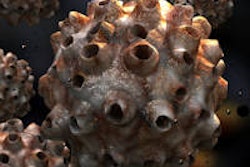A new study has found a link between poor oral health and oral human papillomavirus (HPV) infection, which causes 40% to 80% of oropharyngeal cancers (Cancer Prevention Research, August 21, 2013).
The study, by researchers at the University of Texas Health Sciences Center in Houston, is the first to find an association between poor oral health as an independent risk factor for oral HPV infection, according to a university news release.
But the researchers noted that people can prevent HPV infection and subsequent HPV-related cancers by maintaining good oral hygiene and good oral health.
Study participants who reported poor oral health had a 56% higher prevalence of oral HPV infection, and those who had gum disease and dental problems had a 51% and 28% higher prevalence of oral HPV infection, respectively. In addition, the researchers were able to associate oral HPV infections with number of teeth lost.
Similar to genital HPV infection, oral HPV infection can be of two kinds: infection with low-risk HPV types that do not cause cancer but can cause benign tumors or warts in the oral cavity, and infection with high-risk HPV types that can cause oropharyngeal cancers.
The researchers used data from the 2009-2010 National Health and Nutrition Examination Survey (NHANES) conducted by the National Center for Health Statistics of the Centers for Disease Control and Prevention. This survey consisted of a nationally representative sample of about 5,000 people recruited each year across the U.S.
The researchers identified 3,439 participants ages 30 to 69 years from NHANES, for whom data on oral health and the presence or absence of 19 low-risk HPV types and 18 high-risk HPV types in the oral cavity were available. Oral health data included four measures of oral health: self-rating of overall oral health, presence of gum disease, use of mouthwash to treat dental problems within past seven days of the survey, and number of teeth lost.
They examined data on age, gender, marital status, marijuana use, cigarette smoking, and oral sex habits, among others, which influence HPV infection. The researchers found that being male, smoking cigarettes, using marijuana, and oral sex habits increased the likelihood of oral HPV infection. They also found that self-rated overall oral health was an independent risk factor for oral HPV infection, because this association did not change regardless of whether or not the participants smoked or had multiple oral sex partners.
Because HPV needs wounds in the mouth to enter and infect the oral cavity, poor oral health, which may include ulcers, mucosal disruption, or chronic inflammation, may create an entry portal for HPV, the study authors found.
However, currently,there is not enough evidence to support this, and further research is needed to understand this relationship, the researchers said.



















